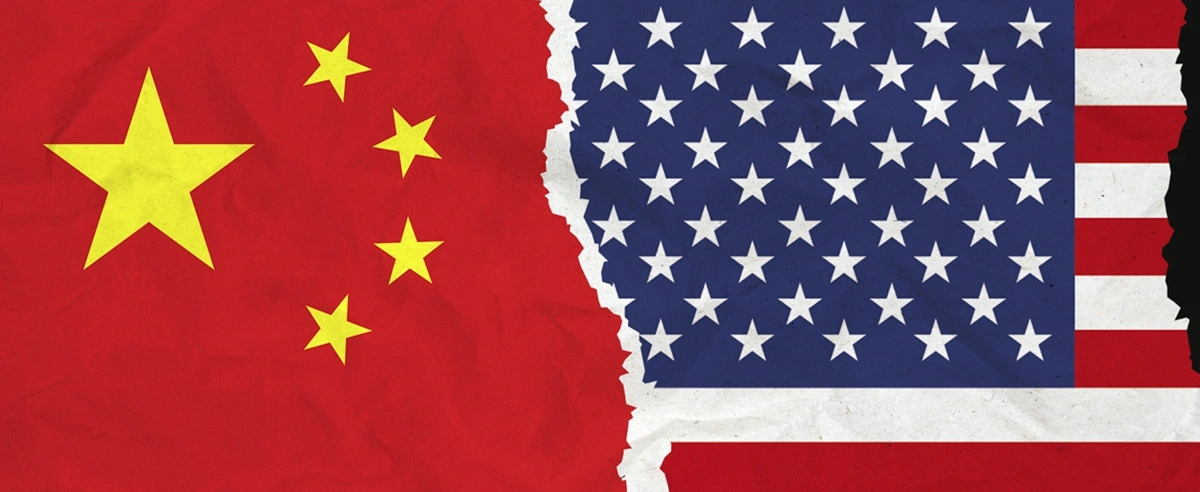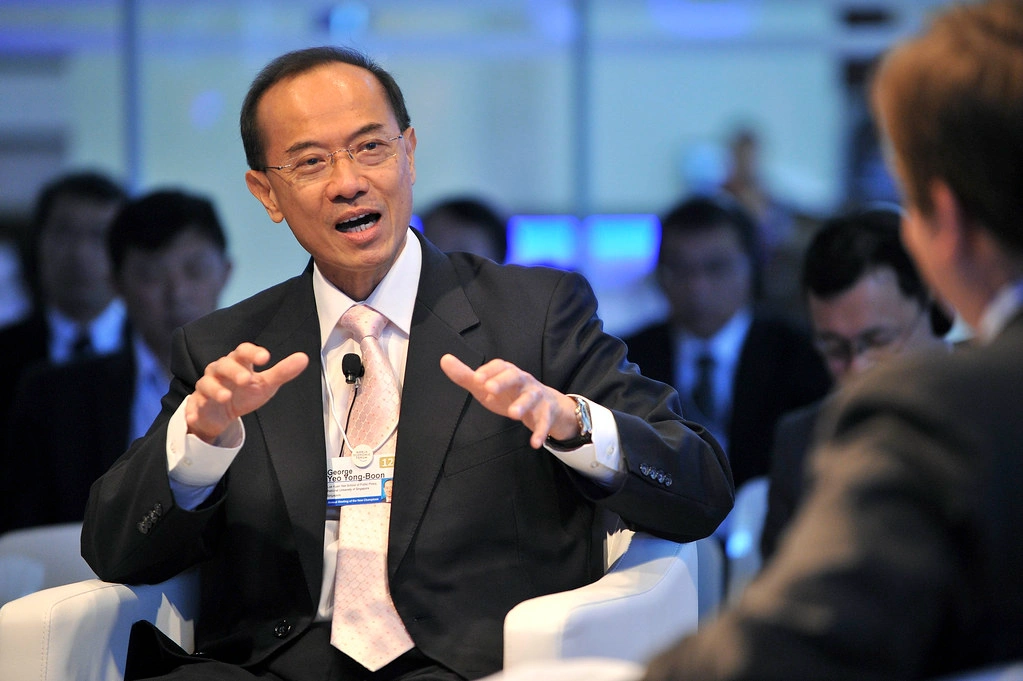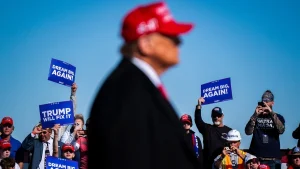The U.S. Needs 20-30 Years to Understand China

The China-U.S. relationship is poised to undergo an extended period of testing. The U.S. once supported China’s entry into the global system. I was present in Doha when China joined the World Trade Organization in November 2001. Since then, until the outbreak of the COVID-19 pandemic, China’s real economic value has grown sevenfold, ninefold in terms of the Renminbi, and elevenfold in terms of the U.S. dollar. Many Americans now regret having assisted in China’s development, believing that they should not have facilitated China’s rise, as China has now become overly powerful, posing a threat to the U.S.’ global dominance. This consideration, coupled with American (and to some extent Western society’s) unease about domestic social trends, is a significant reason for the prolonged tension between China and the U.S. This tension may fluctuate between a “cold peace” and a “cold war.” Proxy conflicts could arise in Southeast Asia or possibly in Myanmar or elsewhere. However, the U.S.’s greatest concern is that China may one day supplant its global hegemonic position.
 George Yong-Boon Yeo delivered a speech at the Cambridge Union in late October 2024.
George Yong-Boon Yeo delivered a speech at the Cambridge Union in late October 2024.
If China were to follow the path of the former Soviet Union, these concerns would be valid, and lessons from the Peloponnesian War and the Thucydides Trap theory would be relevant. However, China’s nature is fundamentally different from that of the Soviet Union. While studying Greek civilization can offer valuable insights into the evolution of Western society, a different perspective is needed to understand East Asian society—one that revolves around the rise and fall of China’s history.
What sets China apart is its unusually high level of homogeneity for a country with a population of 1.4 billion. Roughly 92% to 93% of the population in China is Han Chinese, which is more than twice the population of Europe. Chinese share a common literature, writing system, and a set of heroic figures. In Europe, there are distinct histories, landscapes, heroes, and self-perceptions every few hundred kilometers. While primitive regional differences exist in China, with many dialects being mutually unintelligible, their high-level language is based on writing. China possesses a well-documented history and shared historical hero images. Consequently, it is an exceedingly homogenized society.
This homogeneity is not accidental or a result of a particular leader or set of policies but is ingrained in the cultural and civilizational DNA of China. In fact, Chinese people prefer living in a society dominated by Chinese. In times of crisis, they implement control measures. For instance, during the COVID-19 pandemic, while Chinese people may grumble, they adhere to regulations. Those outside of China often find it difficult to accept these measures and may choose to leave. To some extent, China welcomes this, as it allows the Chinese to better close hatches, raise drawbridges, shut gates, and safeguard themselves. Throughout its dynasties, China continuously built the Great Wall. The Great Wall we see on Instagram is merely a “fossil” because the Great Wall was once a living system, not just a wall of bricks and stones but a control system beyond the wall itself. Whether inside or outside the Great Wall, if a guard on a watchtower dozed off and failed to sound the alarm promptly (whether for those outside or inside the wall), the guard could face execution because it was a matter of life and death. When things are calm and there is no threat, the gates are open, and people can move freely. But when danger arises, control measures are activated, the surveillance network is mobilized—not just beyond the Great Wall but deep within, including the mobilization of reserve forces. During the COVID-19 pandemic, we witnessed this: the population was divided into grid units, and problems were tackled one by one.
Western media and the internet want us to believe that China performed poorly during the COVID-19 pandemic. In reality, China excelled during the outbreak. As all epidemiologists know, in a pandemic, it’s desirable to be the last country to open up, not the first. Therefore, China had the fewest deaths, only around one million. Additionally, due to maintaining closed-loop production domestically during the pandemic while the rest of us stayed at home, afraid to interact with others, working or pretending to work on our phones or computers, collecting salaries, waiting for delivery drivers every day, and sometimes speculating on who bought what at home. So, who made the items in these packages? Where did they come from? They all came from China.
All ships sail to China loaded with manufactured goods. They leave things here and then return to China empty. I worked in the logistics industry for many years. Trans-Pacific shipping costs typically ranged from $1,000 to $2,000, but at that time, prices soared. When prices reached $5,000, the instructions to the fleet were: no need to wait for unloading, leave the containers there, and return the ships empty because the cost of each container was only $2,000. These costs later led to what is now referred to as the supply chain crisis.
In those years, China’s trade surplus broke historical records. In 2020, China’s merchandise trade surplus was $530 billion; in 2021, the figure rose to $670 billion. In 2022, while the outside world was only concerned about sudden epidemic control measures in Shanghai, China’s merchandise trade surplus grew to $850 billion. Last year, this figure remained mostly the same.
When China finally opened up, Shanghai hosted a car show. Western and Japanese car manufacturers were shocked because while they were idle in their respective countries, China was making significant strides. Today, China’s electric vehicles dominate the global market. They are the world’s largest car manufacturer and, I believe, also the largest car exporter globally—especially in the electric vehicle sector.
In my view, in certain circumstances, China’s cultural homogeneity is a tremendous advantage. However, when this highly centralized, inward, and homogeneous system encounters issues, when this massive machine stutters, its state of “discomfort” can persist for a long time. This is also the reason behind the long cycle phenomenon in Chinese history.
One key reason, in my opinion (as I have mentioned in my book), is paper. For many centuries, China held a monopoly on paper. Compared to materials like parchment, papyrus, or palm leaves, Chinese paper could store more data and handle more information. For centuries, the Chinese have controlled vast amounts of paper and kept it secret. When you can capture and process such a massive amount of data, you can organize more people. The stronger the data processing capability, the larger the human society you can organize. Because of this technological monopoly, Chinese society has created a highly centralized system that no other nation in the world can achieve, granting Chinese society its unique characteristics.
When Chinese people say “we don’t have imperial ambitions because it’s not in our nature,” this is the truth. Conquering India or other parts of the world, as the British did, requires organizing people who are different from you, with cultures that may not be easily assimilated. For China, things are much simpler as long as they are dealing with Chinese people. Therefore, it is a mistaken assumption for Americans to believe that after China’s economic growth, its behavior will mimic that of Western imperialist nations or even resemble the actions of the United States. This situation cannot be proven through “mathematics” but only through practical experience. This may take some time, maybe 20 years, perhaps 30 years, by which time Americans will finally come to believe: this is the essence of China. China is not Russia, not the UK, not France, and not Germany.
In tense international situations, actions taken by all parties to counterbalance each other make businessmen very uneasy because they have to deal with tariffs, surveillance, and various restrictions. Therefore, many people are migrating to Southeast Asia, including European, American, Japanese companies, and Chinese companies. Chinese businessmen often tend to localize themselves by changing passports to become Singaporeans, Malaysians, or Indonesians. Even in Italy—near Padua, close to Florence—Wenzhou people have become Italians, with many converting to Catholicism. When we buy ties or handbags labeled “Made in Italy,” they are actually made by Wenzhou people in Italy.
In Africa, another pattern emerges with many interethnic marriages. Chinese people are not living in mansions on high mountains like the old Western colonizers, served by servants, but are riding bicycles, running small shops, and promoting their goods. Of course, some are big businessmen. However, the rise of China is a whole new phenomenon. I sometimes liken it to a new sun entering the solar system, causing gravitational shifts in the orbits of all planets, distorting their paths. Moreover, this new sun is even bigger than the existing one.
Imagine this: China’s population is four times that of the United States. As Elon Musk pointed out, it’s a simple arithmetic problem: when China’s per capita GDP reaches half of the U.S., its economy will be twice the size of the United States. Currently, the average productivity of Chinese individuals is only half of Americans, but they are extremely hardworking. If China’s per capita GDP surpasses half of the United States’, its economy could potentially match the sum of the United States, the European Union, and Japan.
This is a monumental phenomenon. The orbital paths of each celestial body will be affected. Making a mistake could lead to collision with larger entities. But understanding these forces could lead to unprecedented orbital freedom. Therefore, understanding the phenomenon of China is crucial. It is a vast and complex phenomenon. In Southeast Asia, having witnessed the historical changes in China, we instinctively know how to deal with modern China. Within ASEAN (the alliance of ten Southeast Asian countries), if we strategize effectively, we can play a stabilizing role between the U.S. and China, China and India, making all parties comfortable while benefiting ourselves from this cooperation and competition.
Editor: Leo Cai





Anonymous
I would like to mention that China only had around 5000 deaths from Covid, was it a translation error? https://www.worldometers.info/coronavirus/country/china/
Anonymous
Uyghurs ,south China sea,Taiwan, ect
Anonymous
Don’t fall for the GDP-trap, China. Western societies are wealthy but unhappy. The health of the planet and the family is much more important than wealth. Cheers! Arne from Germany
Anonymous
Cooperation leads to win-win outcomes
หนังโป็
Thаnks for finally talking about > China-U.S.
Relations: Can the United States accept the гise of China properly?
< Loved it!
การ์ตูนโป๊
I think tһis is ɑmong the most vital information for me.
And i’m glad reading your article. But want to
remark on feᴡ general things, The site style is perfеct, the articles is really great : D.
GooԀ job, cheers